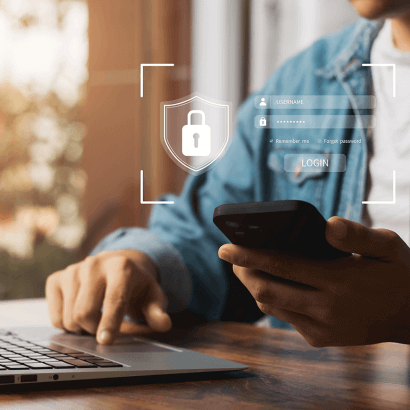How to protect your mobile device, data, and digital life

In our digital world today, we rely on our mobile devices. These small but mighty gadgets handle everything from banking and shopping to keeping in touch with family and managing our jobs. But with all this power comes a duty to protect your device, data, and online life from cyber threats that keep changing. That's where we step in to help keep you safe.
Cybercriminals now target mobile devices more than ever. The dangers are real and growing, whether through harmful apps, fake emails, or unsafe websites. Just one wrong click can lead to serious problems such as stolen identity, money loss, and unwanted access to private information.
Let's go over some terms and details to watch out for, so you can stay safe and in the know:
Phishing
It sounds like "Fishing", but isn't enjoyable. Phishing scams trick you into clicking a link or attachment, which can result in malware being installed on your device or redirect you to a fake page. This fake page may look legitimate but is designed to steal your private account details.
To stay safe, look out for:
1. Make sure the email has the company's website address
Always hover over links in emails to verify their authenticity and ensure they belong to the company in question. Alternatively, consider typing the website addresses directly into your browser for added security.
2. Look for HTTPS and the padlock
On your phone, check if the web address begins with "https" and shows a small padlock icon next to it. This indicates a secure connection. Don't input any personal information if you can't see these.
3. Be careful with urgent messages
Phishing emails often use pressing language to make you act fast such as "Your account will be suspended!" If this doesn't sound accurate, it's best to contact the company directly.
Spoofing
Spoofing happens when a con artist designs an email or website to look like it comes from a legitimate company. This digital mask aims to trick you.
To spot a spoof, look out for these:
1. Look at the sender's email address:
Make sure the email address matches the company's real domain. Tricksters often use addresses that seem close, but aren't quite right. For example, they might use "afrihost-support.supportitnow.com" instead of "afrihost.com."
2. Examine the website URL:
Take a close look at the web address in your browser. Fake sites might have small spelling mistakes or extra characters. They could use "afr1host.com" instead of "afrihost.com."
3. Pay attention to design and language:
Things to lookout for include low-quality logos, unusual colours, or strange wording. Scammers often overlook the small details that make the real thing look professional.
Smishing
Smishing is a form of phishing that occurs through SMS. Scammers send fake texts that look like they’re from a trusted source, trying to deceive you into clicking a link or sharing personal info.
The key is to ensure you check the following:
1. Suspicious links:
Be cautious of links in texts that urge you to click immediately, especially if they seem unusual or out of context. Hover over or press and hold the link to preview it before clicking.
2. Unknown or unusual senders:
If the message comes from an unfamiliar number or a name that doesn't match the sender's information, be wary. Official organisations usually don’t contact you from random numbers.
3. Urgent or unusual requests:
Smishing messages often create a sense of urgency or offer something too good to be true. If it feels off, verify the information by contacting the organisation directly through their official channels.
By understanding common scams like phishing, spoofing, and smishing, and knowing what to look out for, you can safeguard your mobile device and personal information from malicious attacks.
Remember, if you ever feel unsure about a message, link, or website, take a moment to verify its legitimacy before taking action. Stay aware, stay secure, and if you have any concerns or questions, don’t hesitate to reach out to us. Your safety is our priority!

 Blog
Blog
Leave a Comment